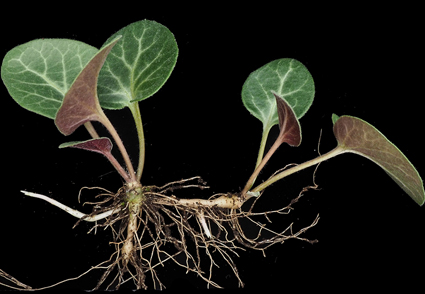Abstract
Sinosenecio jiuzhaigouensis (Asteraceae, Senecioneae), a new species from Jiuzhaigou county in northwestern Sichuan province, China, is described and illustrated. This species is similar to S. hederifolius and S. cyclaminifolius in having ovate-cordate leaf blade and solitary capitula, but differs by having swollen (vs. not swollen) rhizomes and smaller capitula (2–3 vs. 4–5 cm in diameter). Two floral micromorphological characters (configuration of filament collars and of anther endothecial cell wall thickenings), achene surface feature, and chromosome number of the new species are reported.
References
Dümmer, R.A. (1912) New or noteworthy plants. Gardeners’ Chronicle 3: 482.
Franchet, A. (1894) Plantes nouvelles de la Chine occidentale. Journal de Botanique (Morot) 8: 337–365.
IUCN. (2012) IUCN Red List Categories and Criteria: Version 3.1. Second edition. Gland, Switzerland and Cambridge, UK, 32 pp.
Liu, Y. (2010) Systematics of the genus Sinosenecio B. Nord. (Asteraceae). Ph.D. thesis, Institute of Botany, Chinese Academy of Sciences, Beijing, 277 pp.
Liu, Y. & Yang, Q.E. (2011a) Cytology and its systematic implications in Sinosenecio (Senecioneae-Asteraceae) and two closely related genera. Plant Systematics and Evolution 291: 7–24. https://doi.org/10.1007/s00606-010-0365-3
Liu, Y. & Yang, Q.E. (2011b) Floral micromorphology and its systematic implications in the genus Sinosenecio (Senecioneae-Asteraceae). Plant Systematics and Evolution 291: 243–256. https://doi.org/10.1007/s00606-010-0385-z
Liu, Y. & Yang, Q.E. (2012) Sinosenecio jiangxiensis (Asteraceae), a new species from Jiangxi, China. Botanical Studies 53: 401–414.
Nordenstam, B. (1978) Taxonomic studies on the tribe Senecioneae (Compositae). Opera Botanica 44: 1–84.


